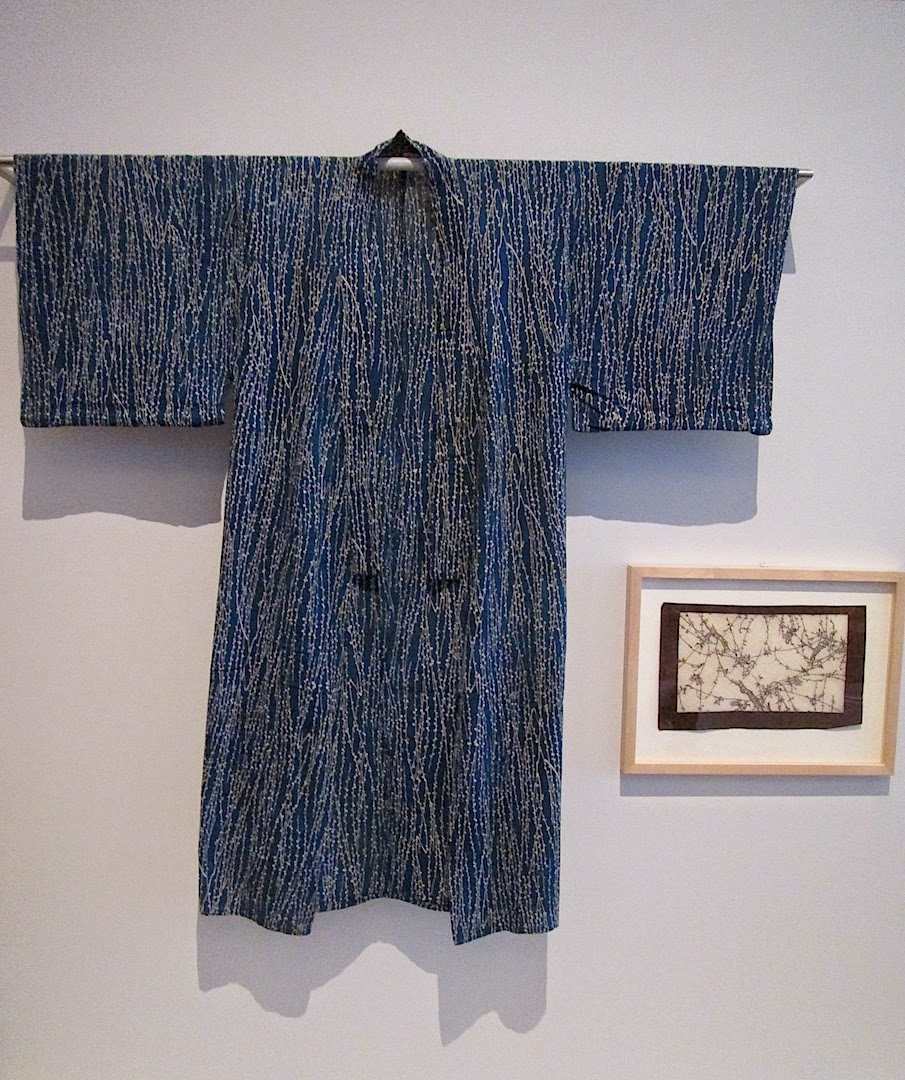They were found in these boxes.
In Dresden, in September 2013, Wolfgang Scheppe found these 92 boxes while exploring the depots of the "Staatliche Kunstsammlung Dresden" (Germany).
These boxes held the world largest collection of 16000 Japanese hand-cutted paper stencils, used for dyeing textiles, mainly Samurai kimonos, a craft that doesn't exist any more in its original form. The time when this craft had been practiced in its traditional and pure way is mainly dated the period of the Edo-era in Japan (1603 to 1868).
I had been to the Katagami exhibition "Die Logik des Regens - Logical Rain" in Dresden at the Japanese Palais. They showed 140 stencils which meditate on the motif of "rain". I was allowed to take some pictures, which turn out to be interesting because they appear in different lights. The light in the showroom changed to signify different shades of light during a rain, and the visitor is accompanied by different sounds of rain also. Very nice.
I can only show some of my pictures here, but if anyone is interested, I can send more photographs via e-mail (MARIASmail@t-online.de)
The Katagami - craft is mainly characterized by its enormous amount of invested time, patience and precision. The pieces consist of mulberry paper that needed up to eight years to gain the right quality and consistency. With specifically manufactured instruments and after traditional recipes the papers were glued together to form a thin pile of layers (about six to twelve).
Into these layers were ever so slowly and carefully cut the most intricate patterns, with knives that were sharpened daily for long hours.
Patterns were poetic and ornamental ones for kimonos for women, and more abstract and geometrical ones for kimonos for men, but always designed with enormous delicacy. So there were patterns which showed up to 23 lines within the width of three centimeters (1,3") of paper, or 900 holes on three square centimeters. It is said that a master could only perform his intricate work for about 30 minutes, he then had to change to some other task in order to not lose his ability to concentrate. One mistake would have damaged an object of immeasurable value.
The stencils are then one by one put onto the fabric while forming an exact rapport, and a certain mash is given onto the fabric through the holes and cuts. At these places which are protected by the mash no color can sink in. After removing the stencils the color is given onto the free lines and spaces of the fabric with special brushes. After that the fabric is treated with steam to make it colorfast. At last the mash is washed out.
Usually the pattern is finally to be seen as white or natural colored lines on cloth that had been dyed indigo blue before.
The whole process of manufacturing the paper, the instruments, of creating the patterns and finding the right recipes for the glue, the mash and the colors lay in the hand of one master. His knowledge often was held as a secret and only passed on within the family.
Sometimes - for example for multiple and multicolored prints - the fragile paper stencils had to be stabilized and put together again. This was done with silk threads that were sewn onto the papers and which formed a stabilizing net. Often this work was done by the wife of the Katagami master. The last two women who were able to master that special Itoire-craft died during the seventies of the last century.
I find it especially interesting, that some of these ancient paper stencils occasionally show patterns which resemble traditional quilt patterns (for example Clamshell or Applecore). There seems to be an ancient source for all these forms which appear in all human cultures and connect them.
( I found this lovely picture of an Applecore-quilt here:
http://gumvalleypatchwork.typepad.com/my_weblog/2012/08/applecore-quilt-class.html
(detail of a table mat I did, spool pattern)
The exhibition in Dresden offers an excellent brochure on the subject of Katagami, I found much of the information given here in the exquisite essay by Wolfgang Scheppe there, and also in the article in the "Süddeutschen Zeitung" by Ira Mazzoni.




























